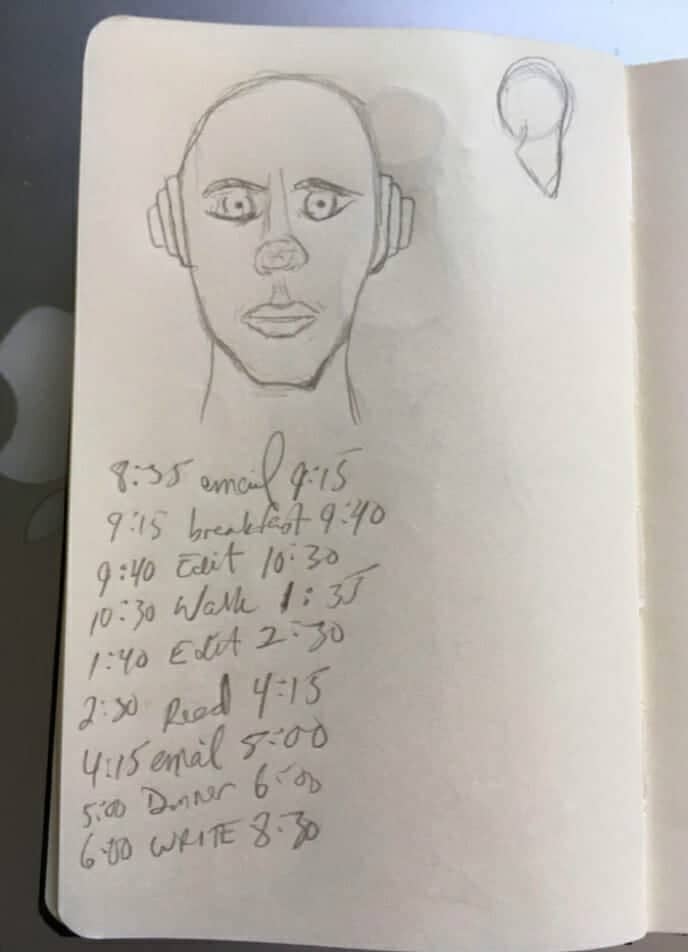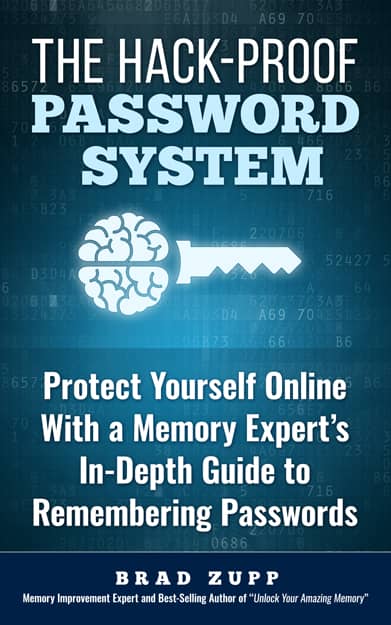Podcast: Download
Subscribe: Apple Podcasts | RSS
 Usually I talk about using mnemonics for highly specific outcomes like learning languages or passing exams.
Usually I talk about using mnemonics for highly specific outcomes like learning languages or passing exams.
But there are so many other ways you can use mnemonics in your daily life.
Ranging from recalling your to-do lists to remembering the yoga moves that help reduce stress, there’s no end I’m aware of to the ways mnemonics can be useful.
The trick is to make sure you have the best possible mnemonic strategies on your side.
To help ensure that you do, on this page, I’ll share links to resources and tutorials I’ve created for you over the years.
I’ve put a lot of love into teaching the ancient art of memory.
And thanks to the many people who have visited this site, we have a treasure trove of material.
People have asked many many great questions and shared their feedback after completing the Magnetic Memory Method Masterclass. And I’m always reading the latest memory science for new insights.
Ready to discover all of the many options available to you for remembering more information as you go about your daily life?
Let’s dive in!
Introduction to Everyday Mnemonics
It’s important to understand what we mean by “mnemonics” above all.
Technically, any technique you use to help you remember something is a mnemonic. Yes, that even includes rote learning.
But even when it comes to repeating information in your mind, there are better and worse ways to do establish long-term.
So when we talk about using mnemonic strategies in everyday life, it’s important to make sure we’re using the best possible memory techniques.
That way, the best possible results will flow.
So that you have them all in one place, here are the core techniques mnemonists love to use:
- The Memory Palace
- Pegword Method
- Major System (or Dominic System)
- PAO System
- Number rhymes
- Spaced Repetition
It’s important to know that the Memory Palace receives so much focus because every other technique can be used inside of this special mnemonic device.
Because so many people have used this particular ancient memory technique over thousands of years, it has evolved different names and slightly different uses. You’ll encounter variations as diverse as the:
Some people even like to use the term “Memory Castle.” Although there’s a lot of overlap between these terms, the key point is that the more you know about how all mnemonics work. the more holistic learning you can do.
But today’s post is not so much about learning at the polymathic level. Today we’re talking about everyday uses. Here are a bunch for you.
Mnemonics In Everyday Life: 8 Wonderful Strategies You’ll Love Using On The Go
As we go through this list, think through your own daily life and imagine how much time you’ll save if you use memory techniques in the ways I’m about to describe.
There is nothing fickle about some of the simpler, everyday uses.
Far from it. In fact, when using memory techniques for simple things, you’re getting both neurobic benefits and great brain exercise.
One: Remember Where You Parked
Wandering around parking lots looking for where you parked wastes so much time.
But when you have a simple pegword system and a number system, you can instantly place a mnemonic image on your parking space that will help you remember its name.

Let’s say that you park in B7 on level 2.
When you have an image for each letter of the alphabet and for each number, you can mentally place those images on the parking space. By doing this, you’re turning the space into an impromptu Memory Palace.
I often use Batman for B and a boomerang for 7. I would place these specific images on the parking spot itself and then near the elevator or staircase place a second image for 2 (a swan). That way it’s easy to remember everything when it’s time to leave the shopping center.
To help and inspire people to learn this special, everyday use of mnemonics, I had Detective Williams use this technique after parking at the Vancouver Public Library where he was investigating a crime. This was in Flyboy, my first “Memory Detective” novel.
Beyond that, I started this list with parking because it’s been a huge problem since people first started driving. Remembering where you’ve put personal items is such a big problem for so many people that Eran Katz named one of his memory improvement books, Where Did Noah Park the Ark?
Now that you know this technique, however, you never have to lose track of your vehicle again.
Two: Remember Your Shopping List
When my wife sends me to the grocery store, I only sometimes write out a list. Usually, I take the opportunity to practice mnemonics.
It’s really simple to memorize a list of items and you don’t need a Memory Palace do it most of the time. You can just use an approach called the linking method.
Let’s say you need to pick up lettuce, salmon, cheese and eggs. To make the list memorable, you just have the items interact or “link” with one another.
For example, can imagine:
- A head of lettuce with enormous teeth biting a salmon
- The salmon then drops a mountain of cheese onto some eggs, which crack horribly
This mnemonic method is called “linking” because you’re creating associations between the items. By the same token, you’re also creating a mini-story. Using narrative elements can be a bit more advanced if you like, so check out my post on using stories to remember information for a full tutorial.
As a bonus suggestion, I recommend learning your shopping lists in another language. Chances are you can use basic chunking to remember the list in your mother tongue. Why not spice it up a little and get more of a mental workout by going beyond the basic grocery list mnemonics?
Three: Remembering Appointments & Other Future Events
Sure, we have automated calendars. Yet, many of us still forget to show up for appointments. Why is that?
One plausible answer is called digital amnesia. Something about storing information in the intangible space of a computer makes it harder to remember. Or so the theory goes.
No matter the reason, I got sick of forgetting appointments, so worked out a way to use mnemonics in everyday life by building what I call a “Mnemonic Calendar.”
It works very simply by drawing upon the 00-99 PAO System that memory athletes have used for decades. You can apply it to everything from memorizing playing cards to the fretboard of your guitar.
To build a calendar, you need a mnemonic image for each number and an image for each month of the year.
Have a look at the example above.
Pumpkin is the image for October. Nail is the image is the image for 25 using the Major System. (If you don’t want to develop your own images, Bruno Furst included a Number Dictionary in one of his courses.)
Once you have all of your images, it’s easy to imagine a quick image based on the month and numbered day.
Need to remember specific times? No problem. Just add additional mnemonic images, much like you add the number of a floor to the name of a specific spot in a parking garage.
You can use your Mnemonic calendar for all kinds of things beyond appointments. These include:
- When certain chores need completing
- Car maintenance schedules
- Assignment deadlines
- When bills are coming due and other aspects of personal or professional financial management
- Preparations for specific anniversaries
Sure, this technique requires a bit of setup. But it’s worth it and has broader applications.
Let’s have a look at one of those specific applications next.
Four: Remembering Recipes And Amounts
I’ll never forget when mixologist David Curtis sent me his testimonial about finally being able to memorize some of the more challenging drinks he was required to create in his profession:
We eventually recorded an entire podcast about his experiences.
As with the examples for remembering your parking spot and assigning a mnemonic image to the days of the calendar, all you need is to have your memory skills amped up with these techniques in advance.
Mixing ingredients applies to drinks, but also all kinds of cooking and other information related to meal plans.
David’s not alone in having success with simple everyday tasks. Read more success stories and watch videos from people who love using mnemonics here.
Five: Remembering Exercise Routines
I’ll never forget the first time I learned about the set of yoga movements that improve your memory. I instantly knew I had to learn them all and put them into practice.
I also needed to learn some of my body parts in order to work on healing certain injuries. Ignorance is definitely not bliss when you’re trying to release tension in your rhomboids, that’s for sure.
Mnemonics can help you remember all kinds of movements, including choreography. In fact, one of Australia’s memory champions, Anastasia Woolmer, is a professional dancer and her TEDx Talk incorporates dance.
Another aspect of fitness I’ve found is that personal trainers use a ton of acronyms. Mnemonics are perfect for remembering them, and scientists have shown that using acronyms is specifically good for specialized learning tasks.
That’s a very good thing, because acronyms come up all the time. People also regularly invent new ones as time carries on.
Six: Remember Names Of New People
When I say new people, I don’t just mean the names I demonstrated memorizing for you in this tutorial. That was at a business event and not exactly an everday use of mnemonics
Quickly remembering the names of new authors, actors, musicians and politics, etc. is an everyday event, however. And it is tremendously useful to be able to do so.
The main way to remember names most of the time involves thinking of someone you already know of with that name. For example, if you meet a new Adam, you can think of a famous celebrity like Adam Sandler. Then you simply link the two people together.
But what if the name is complicated or unusual?
At the event you see pictured above, one of the attendees was named Mungo Bright.
The solution was to relax and let the memory techniques do their work. I quickly thought of a monk playing Go with a bright light hanging over his head. Then I successfully recited each and every name.
When coming across unusual names while reading, there’s much more time to think through your mnemonic images. The trick is to break the name down into syllables, just like I did with “Mungo.”
The sooner you start practicing, the faster you’ll learn this skill. It’s tremendously useful, especially if you’re a reader who wants to retain names and look up different authors later.
Seven: Remember Emergency Numbers & Passwords
Although it happens less often now, sometimes it pays to know the numbers associated with your loved ones.
Not just phone numbers, but medical insurance numbers in case you find yourself at the hospital and have lost your wallet and phone in an accident.
You can include in this list important passwords, something memory expert Brad Zupp joined us to discuss some years ago on the Magnetic Memory Method Podcast. His book on the topic is still worth getting so you can rapidly commit important information like this to memory quickly.
Eight: Daily News Events
Right or wrong, just about everyone’s got an opinion on contemporary events.
If you dislike losing debates due to poor memory, it pays to commit certain details from the news to memory.
Not to pound your opponent into the ground, mind you. But just part of establishing your case as a good debater.
There’s also the personal fulfilment that comes from connecting-the-dots as you think reflectively about the longer stretches of history.
Here’s the key point about this particular everyday use of mnemonics:
All news events are composed of words, names and dates. Since words are really just the names we give to people, actions and objects, you now have all you need to weave just about anything you want about world news into your long-term memory.
Overcoming Obstacles To Success With Mnemonics In Everyday Life
There are three common complaints I would like to address that I’ve received from people who would love to use mnemonics.
Each one is a serious objection that deserves an equally serious answer. For some of them, all the memory improvement exercises in the world won’t change a thing. The individual’s attitude needs to shift.
Here’s what I mean:
I’m not visual person. How am I supposed to use these techniques?
It’s common for people to learn about these techniques and focus entirely on the visual memory techniques at the expense of using mental imagery at large.
As some of my memory competitor friends like Nelson Dellis point out, there’s no time to dream up all kinds of images on the fly.
This is so important, and was never as much a part of the mnemonic tradition until people like Harry Lorayne started insisting that mnemonics are visual. That’s not really true.
So if you’re worried that you can’t see images in your mind or that you have aphantasia, this is not at all an obstacle. Again, as many memory athletes have pointed out, visualization is part of using mnemonics well. But in the heat of using the techniques in real-time, there’s no time.
If you want to know more about why mnemonics have always been primarily logical rather than visual, check out my post on ars combinatoria. Once I figured this aspect of mnemonics out for myself, I was able to memorize much, much faster.
Won’t all these images make my mind cluttered? What if I don’t want so much stuff floating around in my head?
This is a fair concern, especially since some teachers of memory techniques talk about making your mental associations as vivid and lewd as possible. Frances Yates shows in The Art of Memory just how far back in time this practice goes. Tyson Yunkaporta has given some alternative views as well in his book, Sand Talk, that show a bodily sense of how certain debates were settled that I’d rather not repeat.
But for most everyday uses, the mnemonics quickly fade away. Even if you’re memorizing scripture and sometimes use an off-color image, the target information will fade away soon enough. I often counsel people of faith to consider why the creator would make it possible to have such images in the first place if not to memorize using them? St. Augustine and Thomas Aquinas asked similar questions and their answers relate to mine.
If my encouragment to just allow the clutter fall away doesn’t work for you, it’s also perfectly okay to not use mnemonics. Rote learning remains an option, including flashcards and software programs like Anki.
This all sounds great, but… what if I don’t have time to learn all of these mnemonic techniques?
There’s no one-size-fits-all answer here, but I’m not convinced that most of us don’t have time. There’s a difference between interest and desire, after all. And for some people, the desire to pour time into social media, movies or some other distraction is just stronger.
That said, behavioral change is possible. I’ve needed much of that myself in order to keep my scattered mind focused on completing goals.
One tool that has helped me induce lasting neurological rewiring is called The Freedom Journal. I’ve used it to help me complete books and courses I wasn’t keen on slaving over. I also used The Freedom Journal to help me learn Chinese, which I felt merely lukewarm about compared to German.
I also used descriptive journaling to help me see where my time was going. Here’s an image from one of my many journals that uses this strategy:

This technique helps you see where your time goes. I personally find it very difficult to track time wasted on social media, so there’s been much less of it during times when I really need to get things done.
And when it comes to enjoying better memory, I highly recommend making sure you have all of these techniques.
Your everyday life will just get better and better when you can remember more of what’s going on around you.
If you’d like more help, get my free memory improvement course:
It gives you four video lessons and some worksheets to complete.
By the end, you’ll have your first Memory Palaces in place.
Remember, all of the techniques we’ve discussed today can be used inside of Memory Palaces.
Or they can be applied to surfaces like a calendar, which is effectively the same thing as turning it into a special kind of Memory Palace.
That’s the magic of using location-based mnemonics. You can turn everything in your life into a mnemonic tool.
And when you start doing this, everything becomes much more memorable and life becomes so much more interesting.
So, what do you say?
Ready to start incorporating mnemonics into your daily life?
Let’s do this thing!
Related Posts
- The Memory Code: Prehistoric Memory Techniques You Can Use Now
Lynne Kelly, author of The Memory Code, shares her personal experiences learning ancient memory techniques…
- MMMP 009: Memory Training Consumer Awareness Guide
Here's an audio presentation of The Magnetic Memory Method "Memory Training Consumer Awareness Guide."
- Echoic Memory: The Definitive Guide with Real-Life Examples!
What is echoic memory and how does it benefit memory training? If you’d like to…









